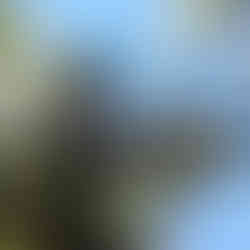Floods, Snakes and Micro Bats
- Ian
- Apr 11, 2021
- 4 min read
Updated: Feb 14, 2022
The rain finally began to fall in December. A little at first leading to great excitement when we had 8mm overnight. November only registered 9mm so 8mm in one day was really something to get excited about. The earth was dry after so little rain for so long.
The bureau of meteorology (BOM) said it would get wet with an active La Niña and it did as the summer came upon us. The falls at first were perfect with light rain over days allowing everything to sink it. The ground was so dry there was little run off until the big falls started and then a major rain event dropped over 300mm over eight days with 110mm over one day, the most rain we have had in a day for two years.
The little creek flooded for the first time in several years, backing up from the Whiteman Creek further down stream, spilling gently across the little valley floor filling the empty wetland and all the gullies. The water dropped quickly, leaving everything dripping with hardly any mud. All the springs and creeks are running. The green of the bush and fields becomes almost eye watering green.
The wetlands are full and overflowing yielding the most beautiful scenes captured perfectly by Terry’s latest gallery.
Flooded wetland - check out the latest gallery
The rain continued in the first half of January but the ground dried off as the rain stopped in the second half. After so much rain the ground was still dry if you dig down. We worried the rain had stopped again like last year but as February got going the rain returned with another 240mm of rain. The wetland overflowed again and the ground got wetter.
Now April is here and the rain hasn't stopped. The ground is saturated and the streams are full. There have even been a couple of floods, the last leaving a slippery layer of mud over the bush, followed by more rain washing most of it away.
Bush Sounds
The fern-leaved and coast banksias are in bloom delighting the birds, feeding on the nectar.
The chatter amongst the noisy friar birds, lorikeets and many other birds is wonderful.
Check out our new page of Bush Sounds to hear the sounds of our bush.
Micro bats

We knew that we had micro bats here as we often watched them as they came out at dusk, flying around collecting insects. One even lived in an old jacket hanging up in the shed. We did manage to get a photo, albeit a not very clear one of it. We think it to be the Broad nosed bat, genus Scotorepens, possibly Scotorepens orion. (if you have any ideas please let us know)
Micro bats are difficult to identify as they are rarely seen and their sounds are generally outside our hearing.
Microbats create a high frequency noise which echos off objects like their insect prey, a bit like a radar. This is called echolocation where they can identify exactly the location of the insect or any other object.
Microbats often form colonies when roosting during the day and females can form maternity colonies where young are raised in colonies of sometimes thousands of young.
We were excited to have a visit from environmental scientists, Dr Dave Sharpe and Dr Deb Perry, who recorded micro bat calls using a bat detector. The bat detector listens for the high frequency echolocation sounds made by the bats while navigating and finding insects and other prey. It records the sound, which can be displayed as a graph and compared to known sounds from bats.
An excellent web site to get more information on bats is All About Bats of Southern Queensland.
Dave was able to identify eight micro bats.
East-coast freetail bat (Mormopterus norfolkensis)
Eastern bentwing bat (Miniopterus orianae oceanensis)
Eastern cave bat (Vespadelus troughtoni)
Gould’s wattled bat (Chalinolobus gouldii)
Hoary wattled bat (Chalinolobus nigrogriseus)
Large-footed myotis, Fishing bat (Myotis macropus)
Little bentwing bat (Miniopterus australis)
White-striped free-tail (Mastiff) bat (Austronomus australis)
We managed one photo of a micro bat in the shed and believe it to be
Broad nosed bat possibly Scotorepens orion
See our separate blog, Micro Bats, for some detail on these wonderful bats and more links on further images.
The 'All About Bats' website is a fantastic site with lots of great photos.
Snakes
Snakes are common here over the summer months. Our regulars, carpet pythons and red-bellied black snakes are often around. These snakes feed off a variety of frogs and small mammals and birds. The wetland provides a good supply of frogs and other animals.
Carpet python (Morelia spilota)

The carpet pythons, Morelia spilota, have bred successfully this year. We found one tiny carpet python inside our chook pen, easily moving through the 1cm square wire mesh protecting the chooks. At this size the snake is in greater danger from the chooks though! Another larger python managed to slide under the door and consumed one of our chicks. The gap has been removed. Our largest python we call Monty is well over two metres long.
Generally these snakes rest during the day and hunt at night but if they find the right place they will rest and be ready to strike any unsuspecting prey wandering passed.
Stephens' Banded
Another beautiful snake is the Stephens' Banded snake, Hoplocephalus stephensii. Unlike the carpet pythons these snakes are venomous. They are tree snakes so spend most of their time off the ground and hide behind loose bark which is where we found this one when a dead tree fell. They hunt frogs and small mammals at night so are rarely seen.

Updated 23 April 2021
















Comments